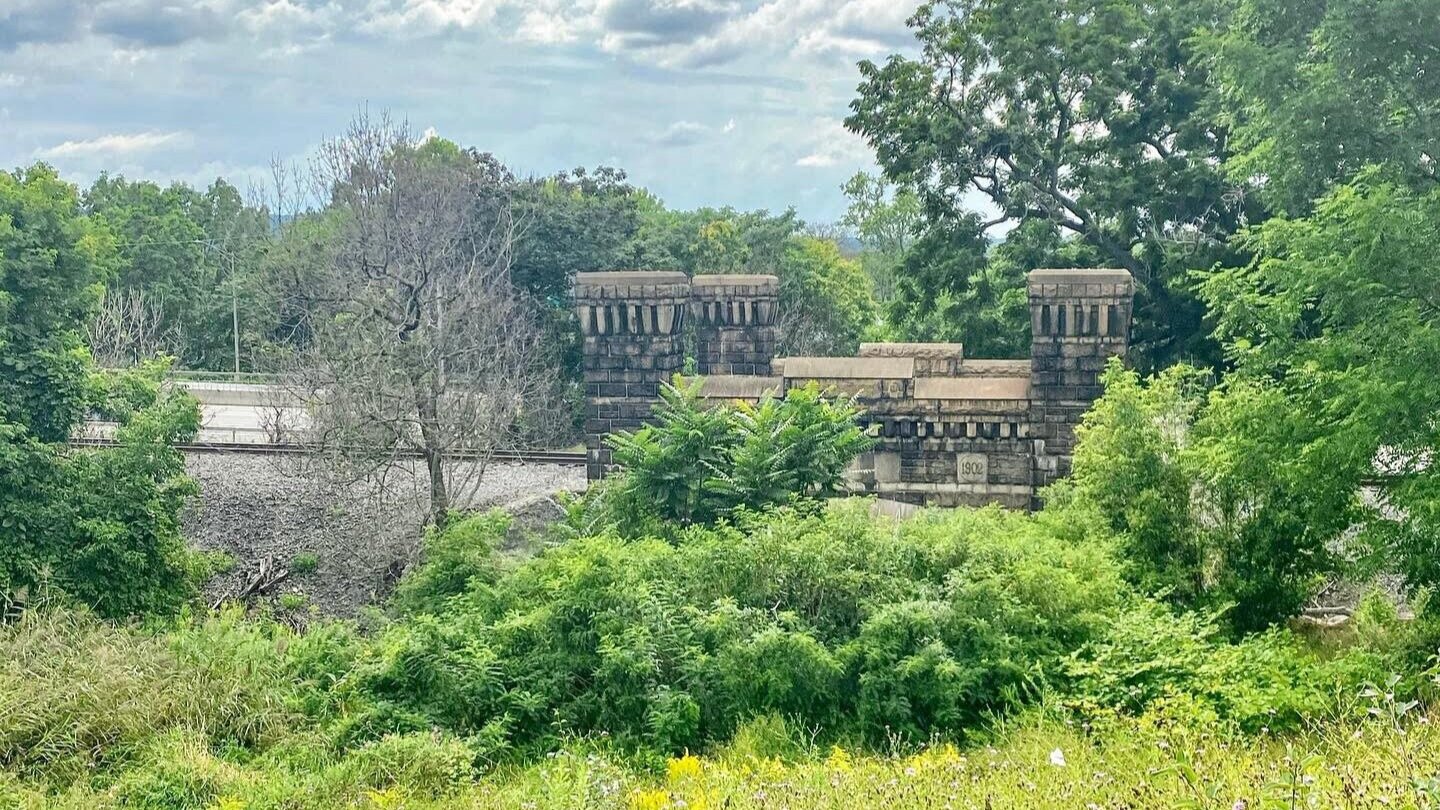Preservationists: I-81 plan must restore access to historic Oakwood Cemetery
This Letter to the Editor was submitted to The Post-Standard and published on Syracuse.com.
To the Editor:
Current plans for the Interstate 81 Community Grid option in Syracuse — as documented in the Draft Environmental Impact Statement (DEIS) released on July 16, 2021 — still miss a major opportunity to correct the wrongs that the original highway construction inflicted upon the Southside and one of our region’s most historic landscapes: Oakwood Cemetery, designed in 1859 by landscape architect Howard Daniels.
These revised plans show the new Business Loop 81 (BL-81) beginning just 150 feet north of Oakwood’s historic main entrance gate, which has been severed from the city ever since I-81 went through in the early 1960s. As many who drive on I-81 know, this abandoned, graffiti-covered stone-arched bridge sits hidden and forlorn on the east shoulder of the highway. Extending the traffic-calming Almond Street in the Community Grid plan to the south, just a short distance to Colvin Street — at a minimum, if not slightly farther to Brighton Avenue — would have major benefits not only for Oakwood Cemetery, but also for the neighborhoods that adjoin this stretch of highway.
I-81 has caused tremendous long-term damage to Oakwood Cemetery, and its blocked entrance gate offers only a hint of the damage that lies behind it. Abandonment, deterioration and vandalism are affecting the chapel designed in 1879 by renowned architect Joseph Lyman Silsbee, the matching Romanesque Revival office building and gate that were gifts of the Belden family, numerous architect-designed mausolea, and the cemetery’s picturesque system of roads and ancient stand of oaks. The thousands of grave markers and monuments of prominent and average citizens alike, many of which are in poor condition, tell the history of Syracuse and Onondaga County, but I-81 has muted them. Much of the cemetery is bombarded with traffic noise, and the highway can be seen from many locations. In its presently land-locked condition, enclosed by the ESF campus and I-81, the original and most historic section of the cemetery faces substantial obstacles to future restoration and viable, safe use without new access from the replacement for I-81.
The impact of I-81 upon Oakwood Cemetery also extends into the adjacent neighborhoods on the Southside and in downtown, which now are cut off from this historic landscape — a local historic landmark that also is listed in the National Register of Historic Places. Designed in 1859, Oakwood Cemetery was Syracuse’s first public park, and its green space was readily accessible, almost forming a greenbelt with Onondaga and Kirk parks to the west. While rural in character, the cemetery was closely connected to Syracuse and was an intricate part of its civic landscape: For decades, the city’s annual Memorial Day parade began at the Soldiers and Sailors Monument in Clinton Square and proceeded down to the Oakwood entrance gate, ending at the cemetery’s Civil War military plot. Townsend Street, which becomes Oakwood Avenue, formed a direct route from downtown to Oakwood Cemetery prior to being severed by the construction of I-81.
Simulation of extension of the Community Grid south of the viaduct, showing possible pedestrian connection to the Oakwood Cemetery entrance gate. (Sabrina Hegenbarth-Juedes, SUNY ESF)
Now imagine the main entrance gate as a landmark on a new city street into downtown, and accessible to Southside and downtown residents from a reestablished Oakwood Avenue. Extension of Almond Street (now called BL-81 in the revised Community Grid plan) south past Oakwood to the proposed new intersection at Colvin Street, if not farther, would reinvigorate this historic landscape as a place that the entire community can once again celebrate. Extending Almond Street would provide many benefits to the Southside in addition to the reconnection to Oakwood Cemetery, including dissipating and slowing traffic before the first intersection presently planned near Dr. King Elementary school, reducing noise and air pollution, and returning traffic to the commercial corridors along South Salina Street.
Many cities across the country celebrate their historic rural and garden cemeteries as centerpieces of their communities, with well-preserved landscapes and programming that goes well beyond the funerial — such as bird-watching, plant identification, historical walking tours, running and cycling, and performances of music and dance — and connections to surrounding neighborhoods. These are places that serve the living and enhance our lives as they honor the dead and commemorate local histories. Look at Mount Auburn Cemetery in Cambridge, Massachusetts; Mount Hope Cemetery in Rochester; Green-Wood Cemetery in Brooklyn; Albany Rural Cemetery; and Vale Cemetery in Schenectady, just to name a few. Oakwood Cemetery deserves equal care and attention. It provides these same cultural resources and opportunities to all in Syracuse and could serve as a viable and accessible place for the entire region.
Please consider submitting comments on the newly released Draft Environmental Impact Statement (DEIS) by the deadline of Sept. 14. Urge the New York State Department of Transportation to extend the Community Grid south to reconnect Oakwood with the city and its people. Comments may be submitted online here.
Rachel Leibowitz, Ph.D. | Preservation Association of Central New York
George W. Curry, FASLA | SUNY College of Environmental Science and Forestry Center for Cultural Landscape Preservation
Robert Haley, AIA | Urban Design Center of Syracuse
Erin Tobin | Vice President for Policy and Preservation, Preservation League of New York State

